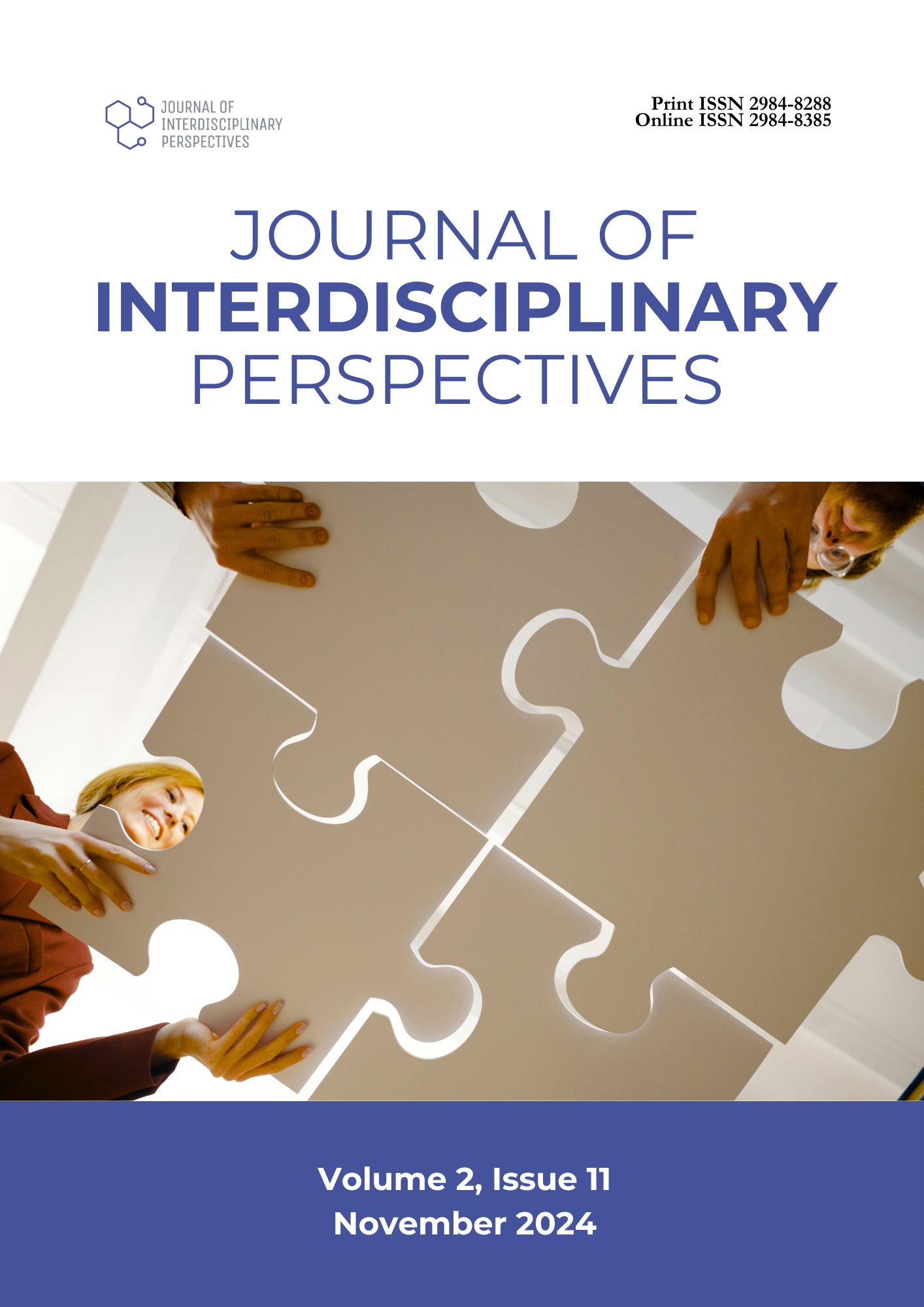The Case of Cogtong’s Timori: Features, Usage and Vitality
DOI:
https://doi.org/10.69569/jip.2024.0463Keywords:
Creolization, Sociolinguistics, Philippines, Timori LanguageAbstract
Language is a dynamic and ever-evolving entity crafted by human necessity, but its intricacies can fade into obscurity if not meticulously documented and preserved. This case study was employed to gain a deep understanding of the research design inherent in the data, which focuses on exploring the linguistic intricacies of Cogtong's Timori language. This looks into its distinctive features regarding phonology, morphological and lexical blends, and syntax. Through in-depth interviews and observations, key informants shed light on Timori's multifaceted usage, encompassing family, educational, and workplace communication. Additionally, it unveils Timori's historical role as a secret code during World War II, a means for discreetly poking fun at others, and a stealthy language for sharing gossip. Despite its vitality within the Cogtong community, Timori remains confined to this locality, facing a dearth of comprehensive written documentation and formal language promotion efforts. To safeguard this unique linguistic heritage of this community, recommendations are proposed, including the need for comprehensive language documentation, the implementation of bilingual education programs, public promotion initiatives, and advocacy for language policies. Timori's significance lies in its ability to connect people through culture and identity, underscoring the necessity of concerted efforts to ensure its continued vitality for future generations.
Downloads
References
Altarriba, J., & Basnight-Brown, D. (2022). The Psychology of Communication: The Interplay Between Language and Culture Through Time. Journal of Cross-Cultural Psychology, 53(7–8), 860–874. https://doi.org/10.1177/00220221221114046
Bakker, P., & Daval-Markussen, A. (2017). Comparative overview of Creole languages. In Creole Studies – Phylogenetic Approaches (pp. 79-101). John Benjamins Publishing Company
Burhanuddin, F., Maknun, T., & Iswary, E. (2002). Language Use of The Community of Drugs Abuse in Sinjai District, Sociolinguistic Study. SELTICS, 5(1), 34-42. https://doi.org/10.46918/seltics.v5il.1319
Castello, D. (2015). First Language Acquisition and Classroom Language Learning: Similarities and Differences (Master’s thesis). ELAL College of Arts & Law, University of Birmingham
Chun Tie, Y., Birks, M., & Francis, K. (2019). Grounded theory research: A design framework for novice researchers. SAGE Open Medicine, 7, 2050312118822927. https://doi.org/10.1177/2050312118822927
Fang, T. (2017). How to Maintain a Minority Language through Education. Chinese Studies, 6, 1-11. https://doi.org/10.4236/chnstd.2017.61001
Fine, A.B., Jaeger, T.F., Farmer, T.A., & Qian, T. (2013). Rapid Expectation Adaptation during Syntactic Comprehension. PLOS ONE, 8(10), e77661. https://doi.org/10.1371/journal.pone.0077661
Gutiérrez Rodríguez, E., & Tate, S.A. (2015). Creolizing Europe: Legacies and Transformations. Retrieved from https://doi.org/10.5949/liverpool/9781781381717.003.0001
Harrison, H., Birks, M., Franklin, R., & Mills, J. (2017). Case study research: Foundations and methodological orientations. Forum Qualitative Sozialforschung / Forum: Qualitative Social Research, 18(1), 1-17. https://doi.org/10.17169/FQS-18.1.2655
Holmes, J. (2001). Sociolinguistics. In International Encyclopedia of the Social & Behavioral Sciences (pp. 14562–14569). Elsevier. https://doi.org/10.1016/B0-08-043076-7/03027-8
Hornberger, N. H. (1998). Language policy, language education, language rights: Indigenous, immigrant, and international perspectives. Language in Society, 27(4), 439–458. https://doi.org/10.1017/S0047404500020182
Islam, N. (2023). Creolization. Retrieved from https://tinyurl.com/38n8axx7
Johnson, M. (2015). Language Evolution and Human Development: The Role of Linguistic Meaning in Socially Organized Behavior. Springer.
Kuhl, P. K. (2010). Brain mechanisms in early language acquisition. Neuron, 67(5), 713-727. https://doi.org/10.1016/j.neuron.2010.08.038
Merriam, S. B. (1998). Qualitative Research and Case Study Applications in Education. Jossey-Bass Publishers.
Minchew, S. S., & Hopper, P. F. (2008). Techniques for Using Humor and Fun in the Language Arts Classroom. The Clearing House: A Journal of Educational Strategies, Issues and Ideas, 81(5), 232-236. https://doi.org/10.3200/TCHS.81.5.232-236.
Markov, I., Kharitonova, K., & Grigorenko, E. L. (2023). Language: Its Origin and Ongoing Evolution. Journal of Intelligence, 11(4), 61. https://doi.org/10.3390/jintelligence11040061
Mufwene, S. S. (2015). Pidgin and Creole Languages. Retrieved from https://doi.org/10.1016/B978-0-08-097086-8.52014-5
Puthuval, S. (2017). Language maintenance and shift across generations in Inner Mongolia (Doctoral dissertation). University of Washington
Rafael, V. L. (2009). Translation, American English, and the National Insecurities of Empire. Social Text, 27(4), 1–23. https://doi.org/10.1215/01642472-2009-05
Raviv, L., de Heer Kloots, M., & Meyer, A. (2021). What makes a language easy to learn? A preregistered study on how systematic structure and community size affect language learnability. Cognition, 210, 104620. https://doi.org/10.1016/j.cognition.2021.104620.
Rogers, N. (2020, November 30). Saving a language, preserving a culture: New translations of Jicarilla Apache texts. Retrieved from https://tinyurl.com/3d4ehvmw
Steels, L., & Szathmáry, E. (2018). The evolutionary dynamics of language. Biosystems, 164, 128-137. https://doi.org/10.1016/j.biosystems.2017.11.003
UNESCO, (2008). Promotion and Preservation of Languages. Retrieved from https://tinyurl.com/2ztumhvc
Vogt, P. (2009). Modeling Interactions between Language Evolution and Demography. Human Biology, 81(3), 237-258. https://doi.org/10.3378/027.081.0307
Yazan, B. (2015). Three Approaches to Case Study Methods in Education: Yin, Merriam, and Stake. The Qualitative Report, 20(2), 134-152. https://doi.org/10.46743/2160-3715/2015.2102
Downloads
Published
How to Cite
Issue
Section
License
Copyright (c) 2025 Journal of Interdisciplinary Perspectives

This work is licensed under a Creative Commons Attribution-NonCommercial 4.0 International License.








